Orthodontics
If your son or daughter is self-conscious about smiling, having braces can greatly improve the way he or she looks and feels.
When treatment is complete, your youngster will have an amazing, healthy smile, as well as the confidence to show it off! We want you and your child to feel comfortable and confident throughout the entire orthodontic experience, so our practice is dedicated to making sure your little one receives the quality care he or she deserves.
How Orthodontic Treatment Works
Orthodontic appliances are made of metal, ceramic, or plastic. They may be removable or they may be brackets bonded to the teeth. By placing a constant, gentle force in a carefully controlled direction, braces slowly move teeth to the proper position.
Gone are the days when a metal band with a bracket was placed around each tooth. Orthodontic patients can now choose brackets that are clear or metallic, and in some cases, customize the color of the appliance. Wires are far less noticeable, and the latest materials are designed to move teeth faster with more comfort.
Duration of Treatment
Depending on several factors, including age, treatment method, and how minor or severe your child’s case may be, treatment time varies and can last between one and three years. Receiving interceptive, or early treatment, can also help provide a quicker treatment time later on in life.
Another big factor to a successful treatment is your child’s cooperation. The more involved and diligent your youngster is, the quicker and more efficient treatment will be.
Before beginning your child’s orthodontic care, Dr. Jensen will discuss all of the options and provide an estimate for how long full treatment may take. Please contact our practice to schedule an appointment and learn more about orthodontics and the treatments we provide.
Types of Braces
Traditional Metal Braces
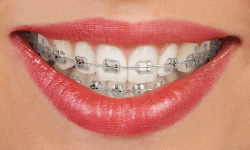
Traditional metal braces are the most common type, and are more comfortable today than ever. Made of high-grade stainless steel, metal braces straighten teeth by using metal brackets and archwires. With metal braces, there is the option of adding colored elastics (rubber bands) for a more unique and colorful smile.
Self-Ligating Braces
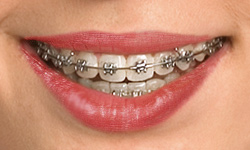
Self-ligating braces are made from the same materials as traditional braces; however, they do not require the use of elastics, which means fewer appointments and less friction on the tooth.
Self-ligating braces come with traditional metal, ceramic, or clear brackets. They are the same size as metal braces, but they use a specialized clip in place of elastics to help the archwire guide teeth into place. The clip helps reduce the amount of pressure placed on the tooth and requires fewer adjustments because there are no elastics to replace.
Clear (Ceramic) Braces
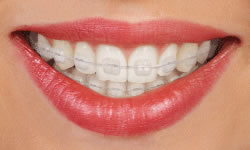
Ceramic braces are made of clear materials and are therefore less visible on the teeth than metal braces. For this reason, they are used mainly on older teenagers who have cosmetic concerns.
Although they are visually less prominent, they require more attention to oral hygiene, because ceramic braces are larger and more brittle than their metal counterparts. For these reasons, ceramic braces tend to be used more on upper front teeth rather than on lower teeth.
Clear Aligners
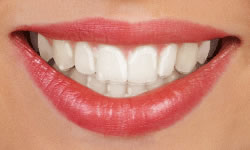
Clear aligners are a series of invisible, removable, and comfortable acrylic trays that straighten the teeth like braces. Not only are the aligners invisible, they are also removable, so they allow your child to eat and drink without concern while in treatment.
Plus, this helps to make brushing and flossing less of a hassle. The aligners are comfortable and contain no metal to cause mouth abrasions during treatment.
Lingual Braces
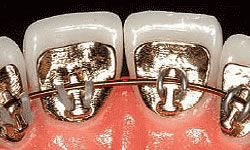
Lingual braces are hidden behind the teeth and are therefore “invisible” when your child smiles. They are 100% customized to match the shape of the teeth. Lingual braces are a very reasonable option for athletes, models, actors/actresses, and musicians who play wind instruments.

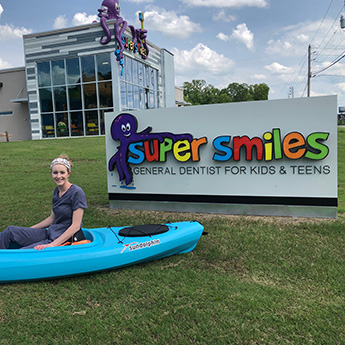
 Website Powered by Sesame 24-7™
Website Powered by Sesame 24-7™